Everything changed in an instant. One moment, it was a warm summer’s day with a few clouds in the sky. The next, a brilliant flash of light blinded everyone and altered the course of history.
Seventy-five years ago, on August 6, 1945, the world entered the nuclear age with the detonation of the first atomic bomb in warfare over Hiroshima, Japan.
“There was a 10,000-degree flash of intense light,” says historian Richard Rhodes, who received the Pulitzer Prize in 1986 for his book The Making of the Atomic Bomb. “It was like a gigantic sunburn over the entire area. Then there was a flush of neutrons from the fireball that followed, and that was the primary killing mechanism.”
Thousands of Japanese died immediately following the detonation of Little Boy, the nickname of that first atomic bomb. Some were vaporized by the initial blast; others were charred beyond recognition by the incredible heat. All told, at least 100,000 people died from the explosion and resulting firestorm that leveled a four-square-mile section of Hiroshima.
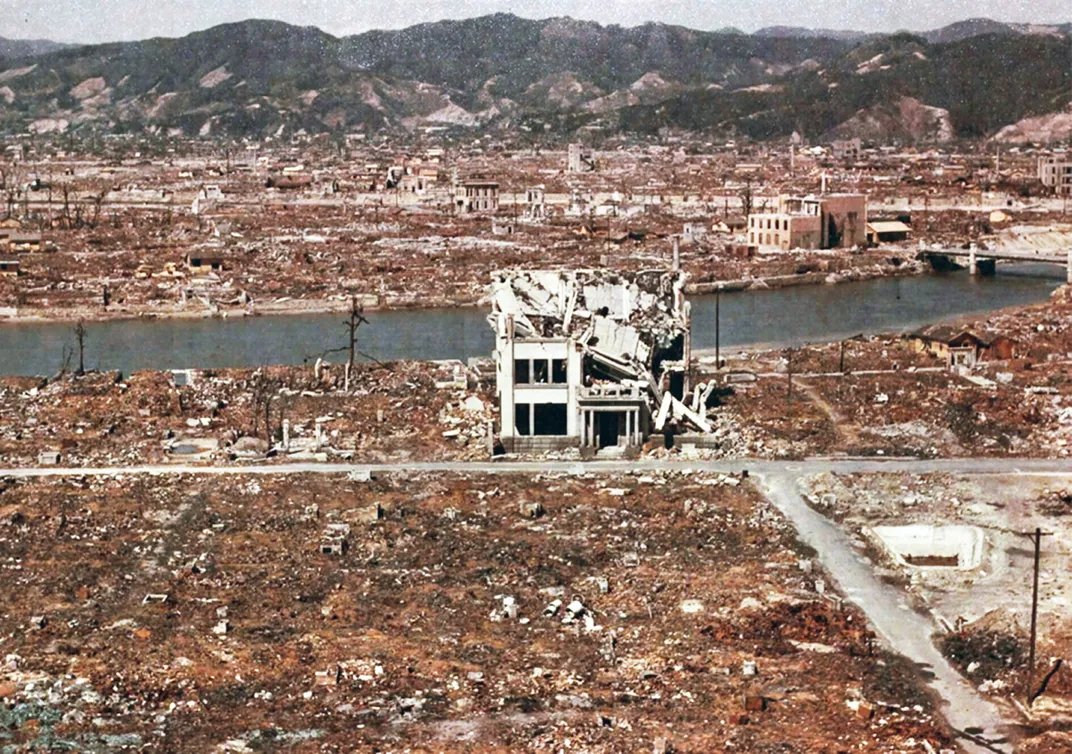
“The primary cause of death in Hiroshima that day was fire,” says Rhodes. “The bomb ignited a massive fire all over the city instantly that led to a classic firestorm, where this chimney of heat is sucking in air from around the edges and increasing the intensity of the fire. It was not primarily radiation that killed and burned the people of Hiroshima, like I think many people assume. It was the fire.”
A single airplane delivered the new weapon of mass destruction—the Enola Gay. At the apex of aviation technology at the time, the aircraft was a B-29 Superfortress, one of a few dozen that were specially modified for the express purpose of delivering atomic weapons.
It was unlike any other bomber—indeed, any propeller-driven aircraft—of World War II. The silvery streamlined plane was designed with a tubular fuselage, three pressurized cabins, tricycle landing gear, modern avionics and an analog computer-controlled weapons system that allowed one gunner to direct fire from four remote machine-gun turrets.
With a propeller diameter of 16 feet, seven inches, the aircraft’s four 18-cylinder 2,200-horsepower Wright R-3350 fuel-injected radial engines were powerful enough to carry 16,000 pounds of bombs while cruising at 235 miles per hour at an altitude of 30,000 feet. Designed by Boeing, the strategic bomber was one of the largest flown during the war, the bloodiest conflict in human history.
On permanent display at the National Air and Space Museum’s Udvar-Hazy Center in Chantilly, Virginia, the Enola Gay was donated to the Smithsonian Institution by the U.S. Air Force in 1949 and kept in storage until 1984, when restoration efforts began. Parts of the plane went on display in 1995 for the 50th anniversary of the end of World War II. Restoration work was completed and the full aircraft was exhibited for the first time in 2003.
“This is one of the largest artifacts ever restored by the museum in terms of the size, scope and complexity,” says Jeremy Kinney, curator in the museum’s aeronautics department. “It took roughly 20 years. Parts of it were finished but the airplane wasn’t fully ready until its reassembly and display in December 2003.”
Scores of museum staff and volunteers—some of them former B-29 maintenance crew members—participated in the preservation project, which involved more than 300,000 hours of work. Although missing a few parts, the Enola Gay is now restored so generations of Americans can see the plane that left an indelible mark in the annals of time.
“It’s as close as it can be to the configuration it was on August 6, 1945,” Kinney says. “There is a very small list of things we are still looking for, but it’s as complete as it is ever going to be.”
The mission to drop the atomic bomb on Japan was at least two years in the making. If it had been ready in time, the Allies might have used the new super weapon on Germany. However, the Manhattan Project, which was led by scientist Robert Oppenheimer, was still in full swing when the Nazis surrendered on May 7, 1945. Trinity, the codename for the first test of a nuclear device, occurred on July 16 in the New Mexico desert.
Lt. Col. Paul Tibbets, a decorated combat pilot in Europe, helped develop the B-29 Superfortress as America’s next long-range strategic bomber. In September 1944, he was given command of the 509th Composite Group, the unit that would later drop atomic bombs on Hiroshima and Nagasaki.
“The B-29 was a wonder of the modern age,” Kinney says. “It was the most-advanced propeller-driven airplane ever seen up to that time. But you have to combine that with the mission of the Enola Gay, which brings in the dimension of the role of technology in war. Here we have one bomber with one bomb destroying one city.”

Tibbets was the group and aircraft commander for the flight. As lead pilot, he named the Enola Gay after his mother. With him that day were copilot Capt. Robert Lewis, bombardier Maj. Thomas Ferebee, navigator Capt. Theodore Van Kirk, weaponeer Capt. William Parsons, assistant weaponeer Lt. Morris Jeppson, electronic countermeasure operator Lt. Jacob Beser, radar operator Sgt. Joseph Stiborik, radio operator Pvt. Richard Nelson, flight engineer Staff Sgt. Wyatt Duzenbury, assistant flight engineer Sgt. Robert H. Shumard and tail gunner Staff Sgt. Robert Caron.
Beser would also fly on the mission to Nagasaki on August 9 aboard the Bockscar, the B-29 that delivered Fat Man, the second atomic bomb dropped in war.
As the Enola Gay made its final approach to Hiroshima that day, Tibbets ascended to 31,000 feet, then turned over controls to Ferebee. Using the Norden bombsight, the bombardier guided the plane to its target: a T-shaped bridge over the Ōta River. He released the bomb at 8:15 that morning.
As the 10,000-pound Little Boy fell away, the aircraft lurched violently upward. Tibbets began evasive maneuvers and banked hard to return to base. Forty-three seconds later, the bomb detonated at its predetermined height of 1,900 feet with the force of 15,000 tons of TNT. A huge mushroom cloud appeared over what had been the heart of Hiroshima. The Enola Gay was then buffeted violently when struck by two shock waves—one direct and the other reflected from the ground.

Caron took photos from the tail of the plane and described what he saw over the intercom for the rest of the crew. He later recounted the experience in his book Fire of a Thousand Suns:
“I can still see it—that mushroom and that turbulent mass—it looked like lava or molasses covering the whole city, and it seemed to flow outward up into the foothills where the little valleys would come into the plain, with fires starting up all over, so pretty soon it was hard to see anything because of the smoke.”
In the logbook, Lewis wrote: “My God, what have we done?” He may have also uttered those words out loud. A few crewmen claimed they heard him say them.
The devastation of Hiroshima was apocalyptic. The city was almost completely leveled while a conservative estimate places the death toll at 100,000 people.
“The Japanese were expected to be in their bomb shelters,” Rhodes says. “Oppenheimer assumed casualties would be relatively low. Of course, this was not a fleet of B-29s. This was two planes—the Enola Gay and the backup plane. The Japanese understandably assumed they were just weather planes. We flew them over Japan all the time in advance of bombing missions. So nobody went into the shelters.”
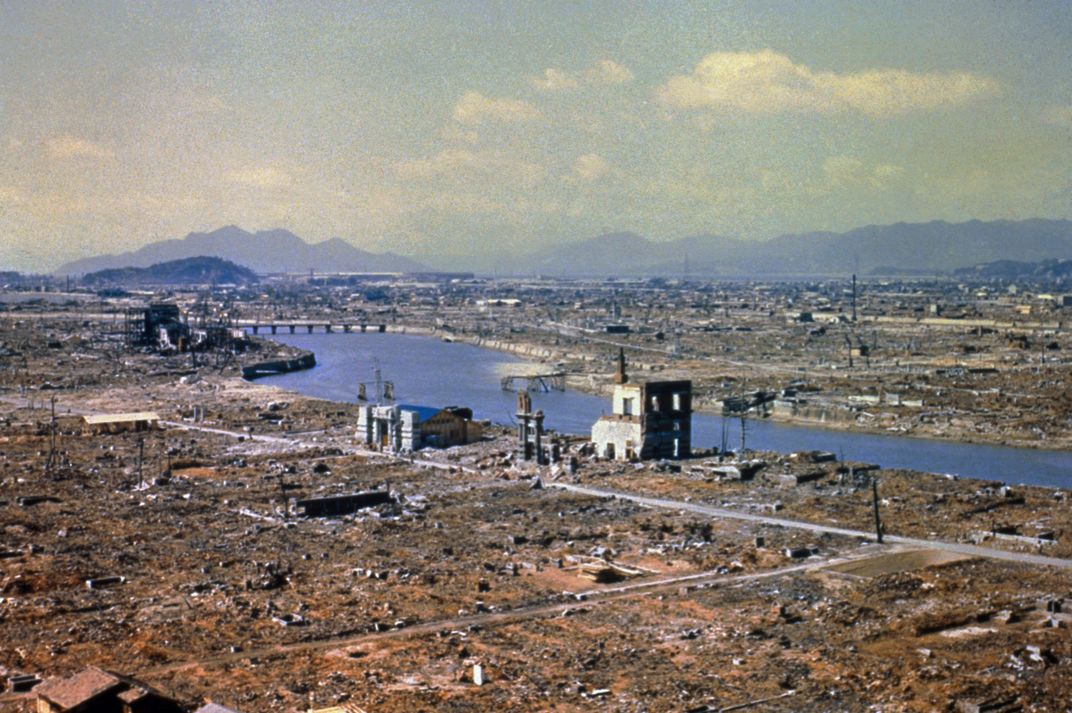
In his book, Rhodes wrote about what happened on the ground just after Little Boy detonated. “At the same instant birds ignited in midair. Mosquitoes and flies, squirrels, family pets crackled and were gone. The fireball flashed an enormous photograph of the city at the instant of its immolation fixed on the mineral, vegetable and animal surfaces of the city itself. A spiral ladder left its shadow in unburned paint on the surface of a steel storage tank. Leaves shielded reverse silhouettes on charred telephone poles. . . A human being left the memorial of his outline in unspalled granite on the steps of a bank.”
It is believed that another 100,000 Japanese citizens died when Fat Man erupted over Nagasaki on August 9. Six days later Emperor Hirohito announced Japan’s surrender. World War II officially ended on September 2, 1945 when Japanese ministers signed the formal Instrument of Surrender onboard the battleship USS Missouri.
At the time, most Allied military and political leaders believed they had no other option. Japanese aggression in the region had fueled the start of the war. In a surprise attack, Japanese naval air forces had bombed the U.S. fleet at Pearl Harbor in 1941, bringing the U.S. into the conflict. And throughout the war, the Japanese military had proven to be tenaciously belligerent—willing to die before surrendering and committing horrendous atrocities against Allied POWs. The war in the Pacific was now grinding on endlessly with mounting casualties each day and no end in sight. The American public was growing weary of the toll it was taking.
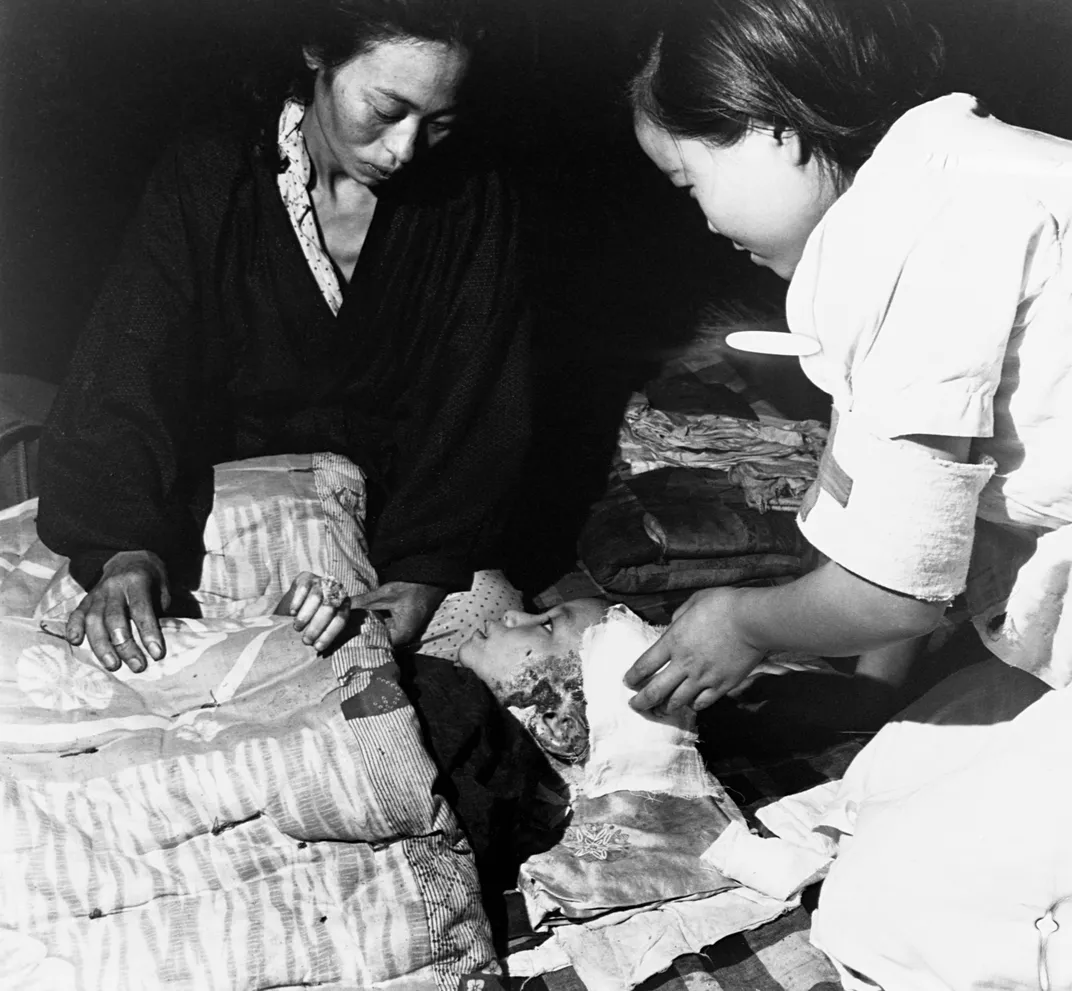
President Harry S. Truman, who famously had a sign on his desk in the Oval Office that read “The buck stops here,” made the decision to drop the bombs. Long after the war, he defended his choice, stating he did so to avoid “an Okinawa from one end of Japan to the other.”
That battle had been extremely costly with nearly 250,000 Americans and Japanese military and civilian lives lost. The Allies expected even worse casualties during the invasion of Japan. The U.S. Chiefs of Staff predicted 1 million U.S. dead and wounded during Operation Downfall, which was scheduled to begin in November 1945. As many as 10 million Japanese might have perished in the attempt to conquer the island.
Not everyone was in agreement with Truman’s decision. After the war, General Dwight D. Eisenhower, who would succeed him as president, and others said they believed Japan was close to surrendering, especially after the Soviet Union attacked Japanese-held Manchuria. The key sticking point was retaining Emperor Hirohito as a ceremonial leader, which the Allies eventually agreed to when they accepted surrender terms.
“For a long time, the Allies demanded the unconditional surrender of Japan,” says Gregg Herken, a former curator at the National Air and Space Museum and author of Brotherhood of the Bomb: The Tangled Lives and Loyalties of Robert Oppenheimer, Ernest Lawrence, and Edward Teller. “Truman pounded on the podium when he issued the Potsdam Declaration two weeks before Hiroshima. It is unrealistic to expect him to make any other decision than dropping the bomb.”
That choice has long inflamed passionate discord. In 1995, a 50th anniversary exhibition of the end of World War II, organized by curators and the director at the National Air and Space Museum and displaying the fuselage of the Enola Gay, met with unprecedented criticism after veterans groups criticized the exhibition’s script for being overly sympathetic to the Japanese and the museum’s historians for being misleading and unpatriotic.
Richard Kurin, the Smithsonian Distinguished Scholar and Ambassador-At-Large, remembers it well. He witnessed the controversy as it happened and how it led to the resignation of the director of the National Air and Space Museum. The original exhibition was scrapped and replaced. The subsequent exhibition then came under fire when a group of historians sent a letter of concern to the Smithsonian Secretary I. Michael Heyman calling the display "highly unbalanced and one-sided."
In a recent interview, Kurin says the entire episode forced the Smithsonian to reevaluate its role as “America’s museum” and how it would present history in the future.
“It was humbling and painful,” he says. “The museum director did resign and there was a lot of heartache. But it taught us an important lesson. The underlying sense was the American people felt they had a stake in how the museum represented key events and milestones in the nation’s life. It puts more burden on the museum to get it right by establishing a framework for dealing with difficult issues in American history. We’re not going to shy away from controversial topics, but we came up with a number of steps to make sure we deal with them in a full, complete and sensitive way.”
In his 1997 book Reflections of a Culture Broker, Kurin deeply analyzed the process of developing exhibitions and displays, revisiting the 1995 controversy. “History, when done publicly, can become a field of passionate contention and strong debate—especially when it purports to stand for us as a nation,” he wrote. “The curatorial art is combining and juxtaposing analysis and memory, celebration and revelation, heritage and history. Like other brokers, curators are always at the border, engaged in efforts of cultural translation and symbolic transformation, making meaning for the disparate audiences and constituencies who have a stake in what they do.”
Kinney agrees. The Enola Gay was the best aircraft of its era, but the development of that technology came with a price. “We need to understand that this plane was a weapon that brought about the end of World War II and ushered in a new age,” he says. “We temper any consideration of that with an understanding of the loss of life involved, and there was a lot of it in that war overall. That’s how I talk about it.”
When the restored Enola Gay went on permanent display in 2003 at the Udvar-Hazy Center, it attracted quite a bit of attention. Among the visitors were the three surviving crew members: Paul Tibbets, Theodore Van Kirk and Morris Jeppson. They wanted to see the plane they flew into history for a final time.

“It hadn’t been fully assembled since the 1960s and they wanted to climb inside it again,” Kinney recalls. “It was a chance for them to connect with that moment in time. They were proud of their service and proud of serving their country. That was their job. They believed it saved lives and hoped it never had to happen again.”
For years after the war, the crew of the Enola Gay never wavered in their belief they did what they had to do. None of them liked it, but all believed it preserved life by ending a terrible war where a lot more killing was expected. Almost to a man, they admitted they would do it again if the circumstances were the same.
“War is a terrible thing. It takes and it destroys,” the mission’s radar operator Richard Nelson told a reporter on the 50th anniversary of the bombing. “Anyone feels sorry for people who are killed. We are all human beings. But I don’t feel sorry I participated in it. If I had known the results of the mission beforehand, I would have flown it anyway.”
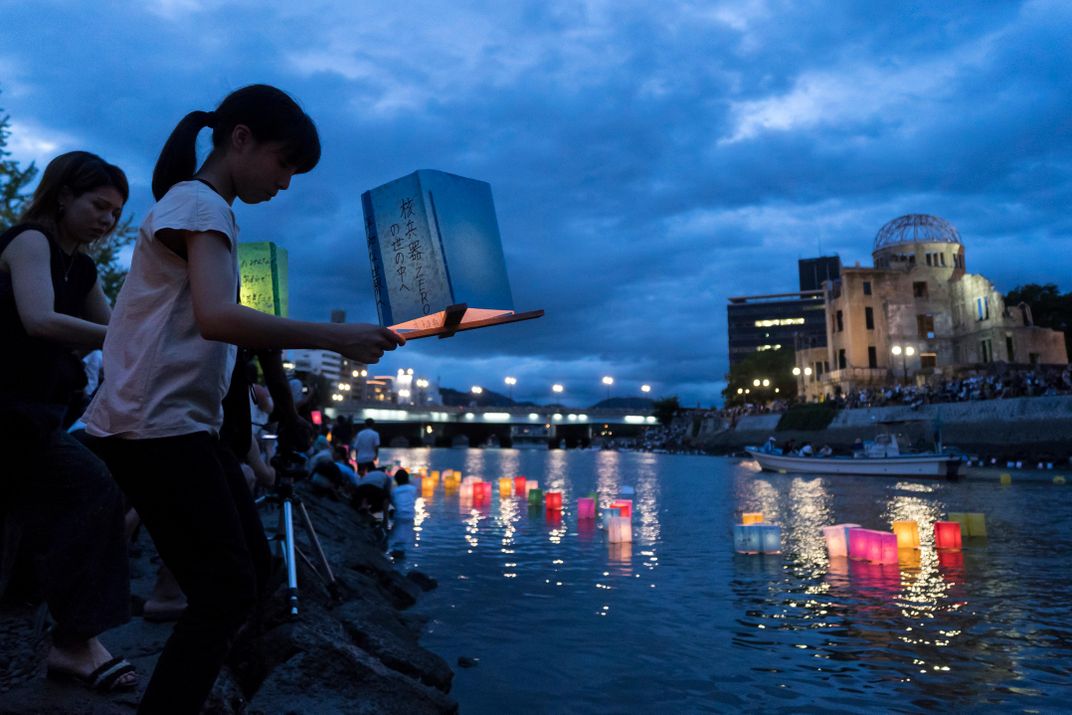
Rhodes echoes that sentiment, pointing out that most Americans were glad it brought about an end to the killing. He was 4 years old when Pearl Harbor was attacked and 8 when the bomb was dropped. “My childhood was consumed by the war,” he says. His own brother served in the Navy at Okinawa.
In 1945, the Academy Award-winning actor Paul Newman was serving as a radio operator and gunner on a U.S. Navy plane. Rhodes recalls talking to the actor. “Paul was a friend and he told me, ‘I know all of the controversy about the weapons, but I was training to fly a two-man Navy fighter-bomber in the invasion of Japan. I’m one of those guys who says thank God for the atomic bomb because it probably saved my life.’”
Four years ago, President Barack Obama visited Japan to lay a wreath at the Hiroshima Peace Memorial, and offered this cautionary word of advice to a world historically prone to war and violence: “Science allows us to communicate across the seas and fly above the clouds, to cure disease and understand the cosmos, but those same discoveries can be turned into ever more efficient killing machines. The wars of the modern age teach us this truth. Hiroshima teaches this truth. Technological progress without an equivalent progress in human institutions can doom us.”
/https://tf-cmsv2-smithsonianmag-media.s3.amazonaws.com/filer/f0/13/f013f11b-eebe-46a6-ba60-732ce99ce85e/longform_mobile2.jpg)
/https://tf-cmsv2-smithsonianmag-media.s3.amazonaws.com/filer/37/55/37553aba-db0f-4578-b531-5d388d35632a/longform_desktop_2.jpg)
/https://tf-cmsv2-smithsonianmag-media.s3.amazonaws.com/accounts/headshot/dave.png)
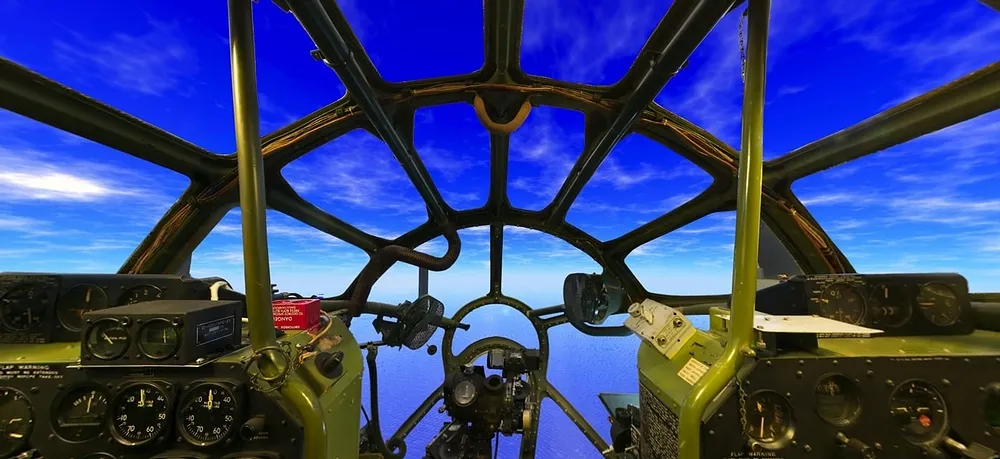
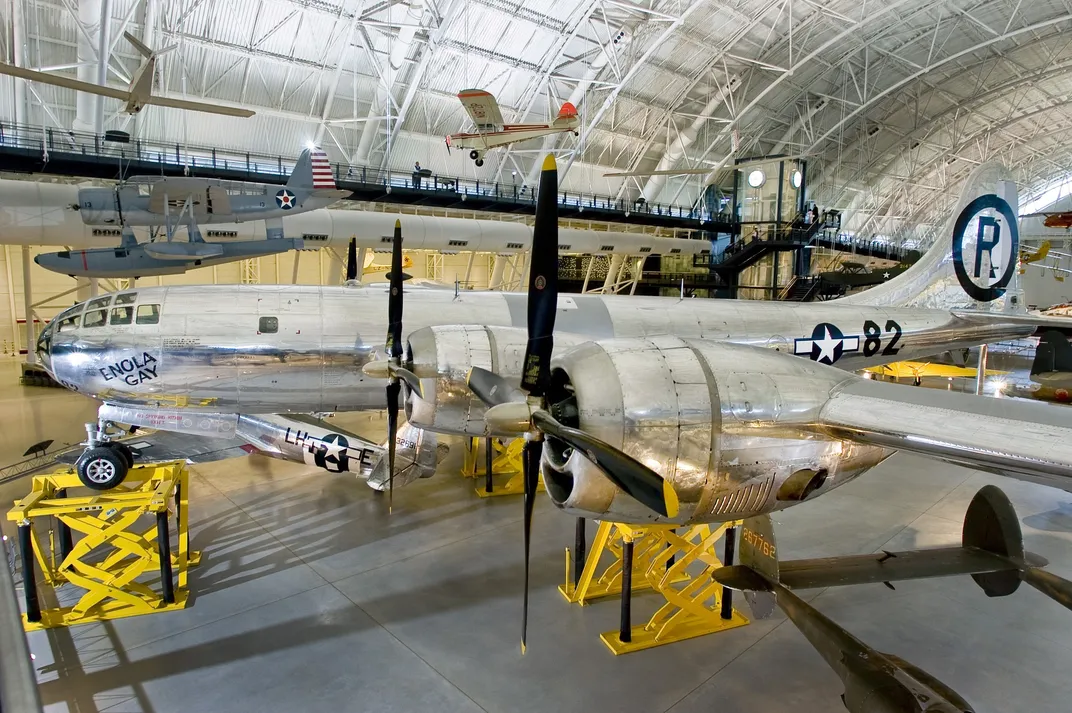
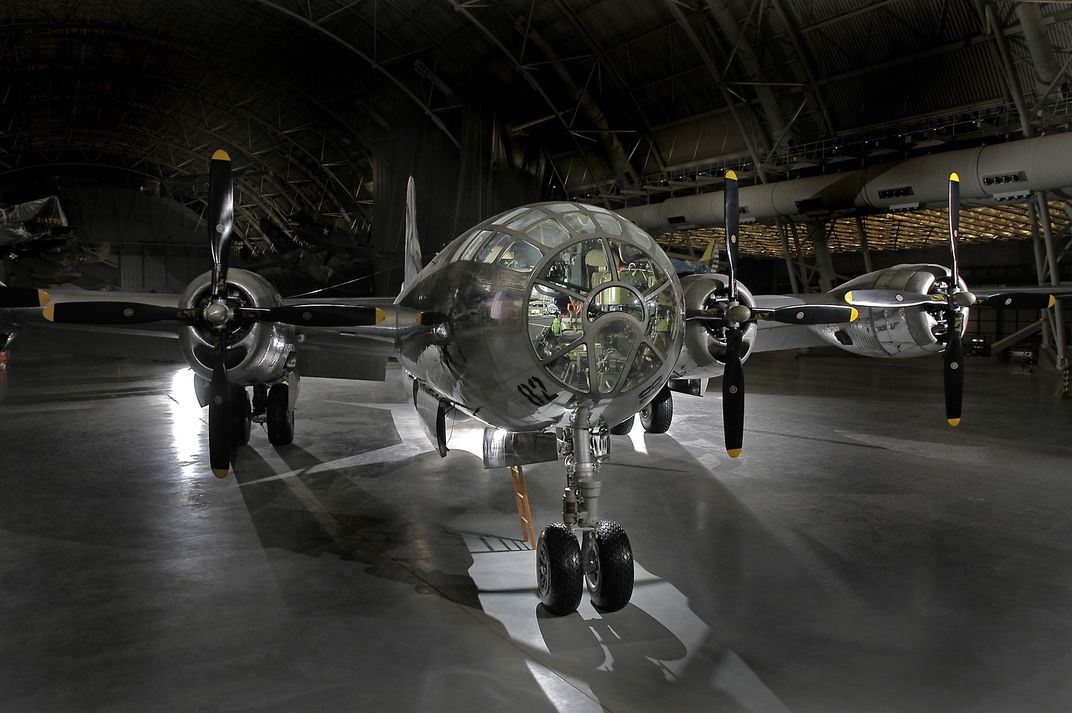

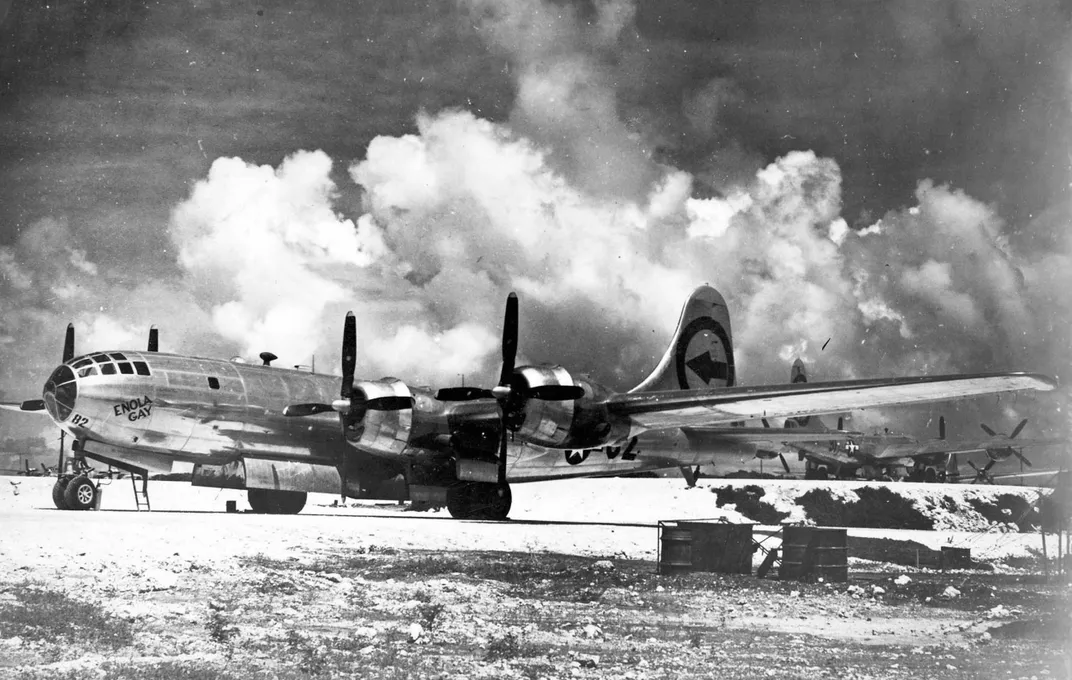
/https://tf-cmsv2-smithsonianmag-media.s3.amazonaws.com/accounts/headshot/dave.png)